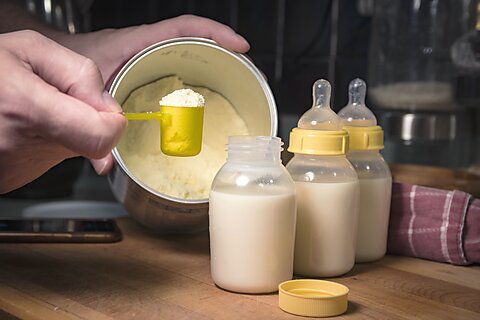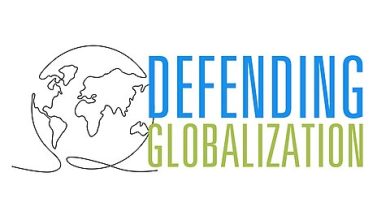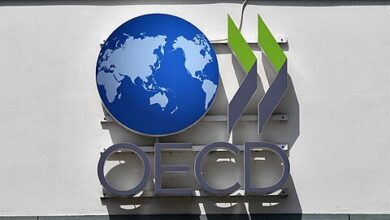FTC Gets 2/3 of the Infant Formula Crisis Right

Scott Lincicome and Alfredo Carrillo Obregon
The Federal Trade Commission last week released a report on the market factors that contributed to the infant formula shortage of 2022. Given our analysis of this topic last year, we were glad to see that the FTC identified most of the policy‐related impediments that we identified as exacerbating the crisis. Notably absent from the report, however, is any mention of how highly restrictive US trade policies also contributed to one of the longest and deepest supply chain crises of the pandemic.
WIC
The first policy targeted by the FTC report is the Special Supplemental Nutrition Program for Women, Infants, and Children (WIC). The agency concludes that WIC’s structure—in particular, the single supplier contracts that states offer to formula manufacturers—does lower program costs, but also risks 1) states becoming “overly reliant” on one formula brand, 2) creating barriers to entry for competitors, and 3) having “unintended spillover effects” on the non‐WIC formula market.
Our 2023 report reached the same conclusion, explaining that these contracts have contributed to only three large producers—Abbott, Reckitt/Mead‐Johnson, and Nestlé—dominating the US infant formula market. That’s because only producers of that scale could afford to offer the discounts state WIC offices demanded, and because securing a state’s WIC contract leads to dominance in the non‐WIC formula market. This concentration, we explained, prolonged and deepened the 2022 formula crisis by making the US market less able to adjust when a large Abbott factory went offline early that year.
Here’s how the FTC report put it:
While cost effective, the current single‐supplier WIC contract mechanism may make the U.S. infant formula market more fragile. The single‐supplier contract mechanism, combined with the size of WIC in the infant formula market and documented volume spillover effects, means that the manufacturer holding each state’s WIC contract dominates that states’ market with an average of 84% market share. By rendering each state dependent on a single manufacturer for the vast majority of its infant formula supply, single‐supplier contracts can make it more likely that a lone contaminant outbreak or incident will have cascading and outsized effects leading to serious supply disruptions.
[…]
[S]ingle-supplier WIC contracts may also contribute to increased nationwide concentration by foreclosing smaller companies from competing for the entire WIC share of the market (in addition to any volume spillover sales). Smaller manufacturers generally lack sufficient scale to afford the same scale and rebates as the largest incumbent manufacturers. USDA data shows that between 2003 and 2013, only the three largest manufacturers (Abbott, Mead Johnson/Reckitt Benckiser, and Gerber/Nestlé, now Perrigo in North America) have ever bid on a single‐supplier WIC contract. (Emphasis ours.)
The FTC report also notes that such WIC‐enabled concentration, and the program’s bureaucracy, makes responding to a supply disruption more difficult:
Even if the overall national infant formula supply is held constant, each state’s reliance on a single manufacturer means that shifting products towards impacted states when disruptions arise can be a challenge. A disruption in a highly concentrated state market may require significantly modified supply chains, which may require new agreements between manufacturers, distributors, and retailers before alternate supply can physically enter the state. Additionally, all such alternate commercial arrangements must be made in compliance with state and federal WIC regulations for WIC families to ultimately access alternate brands at the retail point‐of‐sale.
Notably, the FTC also highlights that the WIC program’s dramatic expansion over the last few decades—another point our 2023 analysis made—could be increasing retail prices for formula purchased outside the program, thus making it harder for families to switch to purchasing non‐WIC brands in the event of a crisis:
One theory as to how WIC contributes to formula price increases is that the expansion of the WIC Program to approximately 50% of the overall market transformed many of the most price‐sensitive purchasers (low‐income WIC‐eligible families) into entirely non‐price sensitive purchasers by eliminating their exposure to the ordinary retail price, since WIC covers 100% of the cost of formula at the point‐of sale. One 2009 study funded by the USDA Economic Research Service examined estimated that the expansion of WIC coverage was a primary factor in the increase in the real wholesale price of infant formula from 1980 to 2002.
[…]
[R]oughly 50% of infant formula purchases in the United States are made by WIC participants whose purchases are subsidized by the program. This sizeable population with decreased price sensitivity may allow manufacturers to raise their wholesale prices above what they would be in the absence of the WIC Program. (Emphasis ours.)
To the extent that WIC subsidies end up making baby formula more expensive in the United States, the result would contradict the program’s stated nutritional objective (i.e., to increase American parents’ access to formula).
FDA Regulations
The second problematic policy identified by the FTC report is the relatively onerous US Food and Drug Administration (FDA) regulations for producing and selling formula in the United States. Here, the agency finds that the US formula regulations are stricter than both other countries’ formula regulations and US regulations governing other foods—including baby food and toddler formula. Complying with these regulations, the FTC finds, is extremely costly, thus hindering new entrants into the infant formula market and further exacerbating industry concentration:
Infant formula is categorized as a food by the FDA. Yet, aspects of its stricter regulatory oversight—specifically that of product research and development, including generating data and documentation—approach regulation for pharmaceuticals. Specialized pre‐clinical protein assays and weeks‐long human clinical growth studies are particularly costly in terms of time and capital, with some manufacturers spending more than $190 million and five years of time in an evaluation phase prior to beginning sales. Standard review timelines built into the regulations require over half a year for a formula’s research and development to undergo FDA review. (Emphasis ours.)
Once again, we agree with the FTC and wrote much the same thing last year:
FDA regulations increase the costs of entering the U.S. formula market, thus perpetuating a lack of competition and high concentration. Since the 1980s, federal regulations have tightly restricted the content and manufacture of infant formula, and today the United States regulates formula more strictly than any other food, including formulas consumed by American toddlers.
This regulatory problem, we note, is consistent with “empirical evidence show[ing] that high degrees of regulation can contribute to market concentration.” It’s good to see the FTC acknowledge it too.
Nothing on Trade?
Unsurprisingly, we welcome the FTC’s examination of how the WIC program and FDA regulations helped fuel the 2022 formula shortages, as well as the agency’s suggestion that these policies be reevaluated with an eye toward avoiding future crises. However, it’s disappointing that the FTC report omitted any and all mention of the other federal policy that clearly played (and continues to play) a role in the 2022 formula crisis: US trade restrictions.
As we explained in our paper, the United States maintains high tariffs on imported infant formula from most countries and even sets limits on formula exported from free trade agreement partner countries, such as Mexico and Canada. The Congressional Research Service estimates that less than 20 percent of formula imports between 2012 and 2021 entered the United States duty‐free, while the remainder faced an average effective calculated duty rate of 25.1 percent.
Adding insult to injury are the non‐tariff barriers. In particular, the FDA imposes strict nutritional labeling and other rules on imported formula and requires foreign manufacturers to undergo lengthy evaluations prior to being authorized to export products to the US market. The FDA also maintains a “red list” of noncompliant products that are immediately subject to detention upon entry into the United States. These onerous regulations apply to imports from all countries, including those with highly competent regulatory regimes, such as the European Union, the United Kingdom, Australia, and New Zealand.
As a result of these tariff and non‐tariff barriers, imports accounted for less than 2 percent of total US formula consumption in 2021 (Figure 1).
Tellingly, one of the most significant moves the US government made in 2022 to alleviate the formula crisis was to liberalize these trade restrictions—suspending the tariffs until January 2023 and exercising “enforcement discretion” with respect to the regulatory restrictions. Unfortunately, this and broader liberalization were never made permanent, so the same US trade policies that contributed to the market’s fragility in 2022 remain in place today, thus putting the market’s future stability at risk (much to American parents’ chagrin).
It’s a shame the FTC didn’t notice that too.





